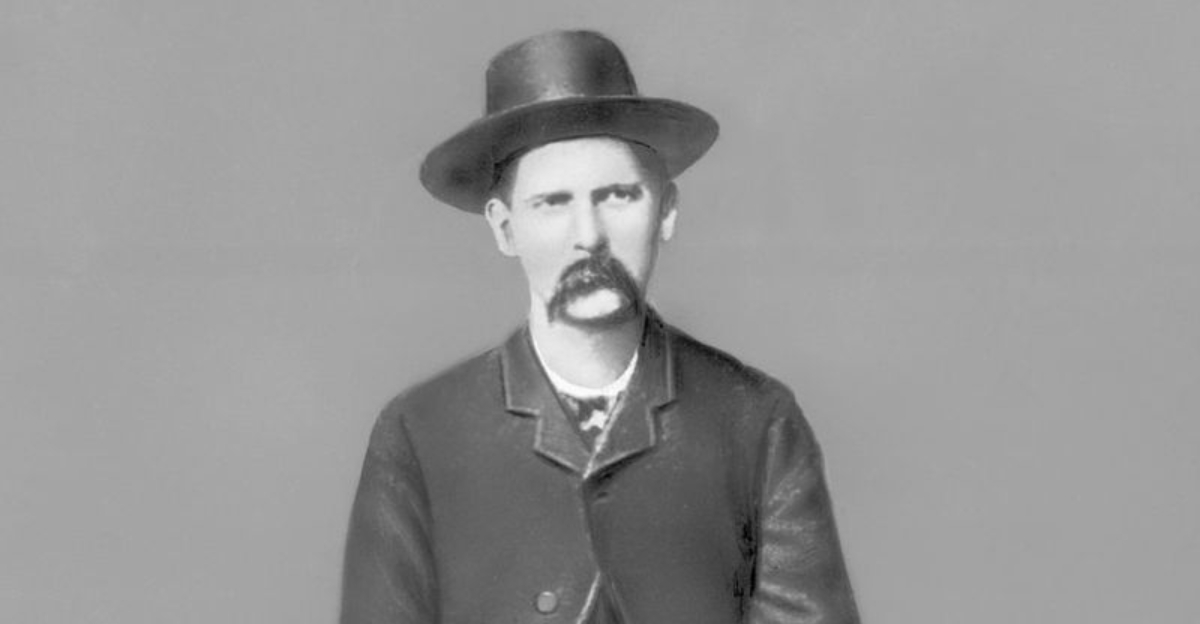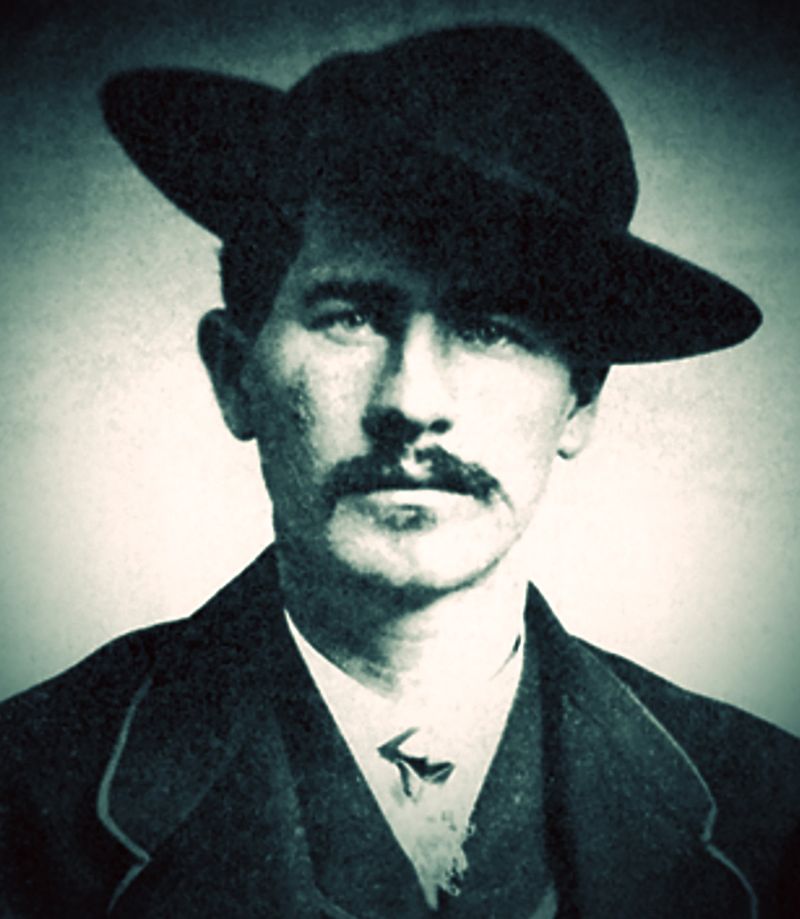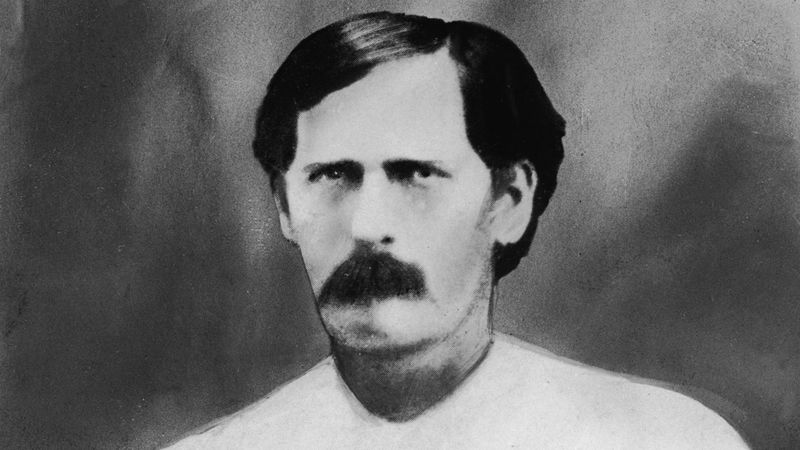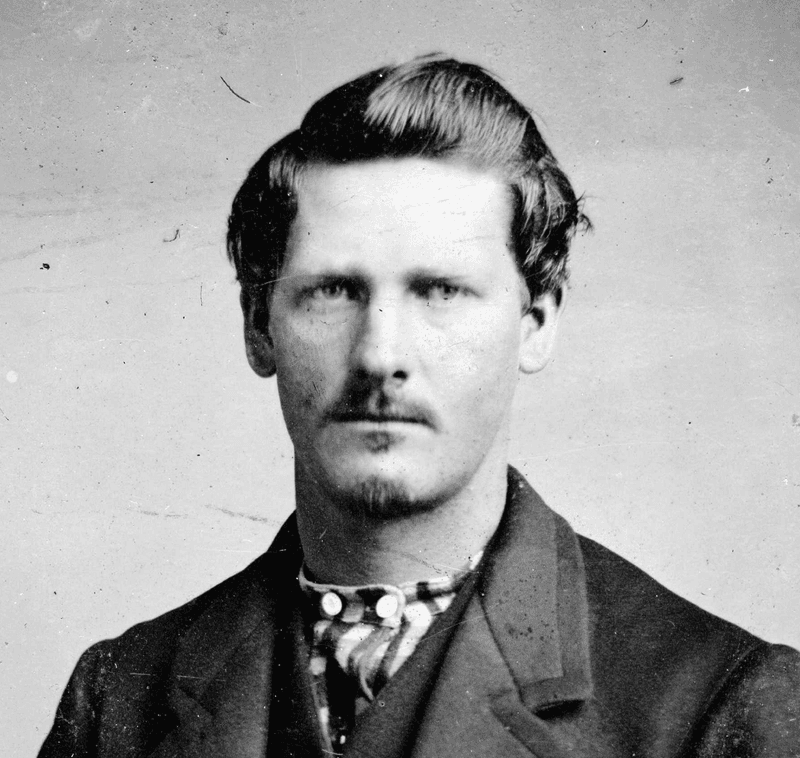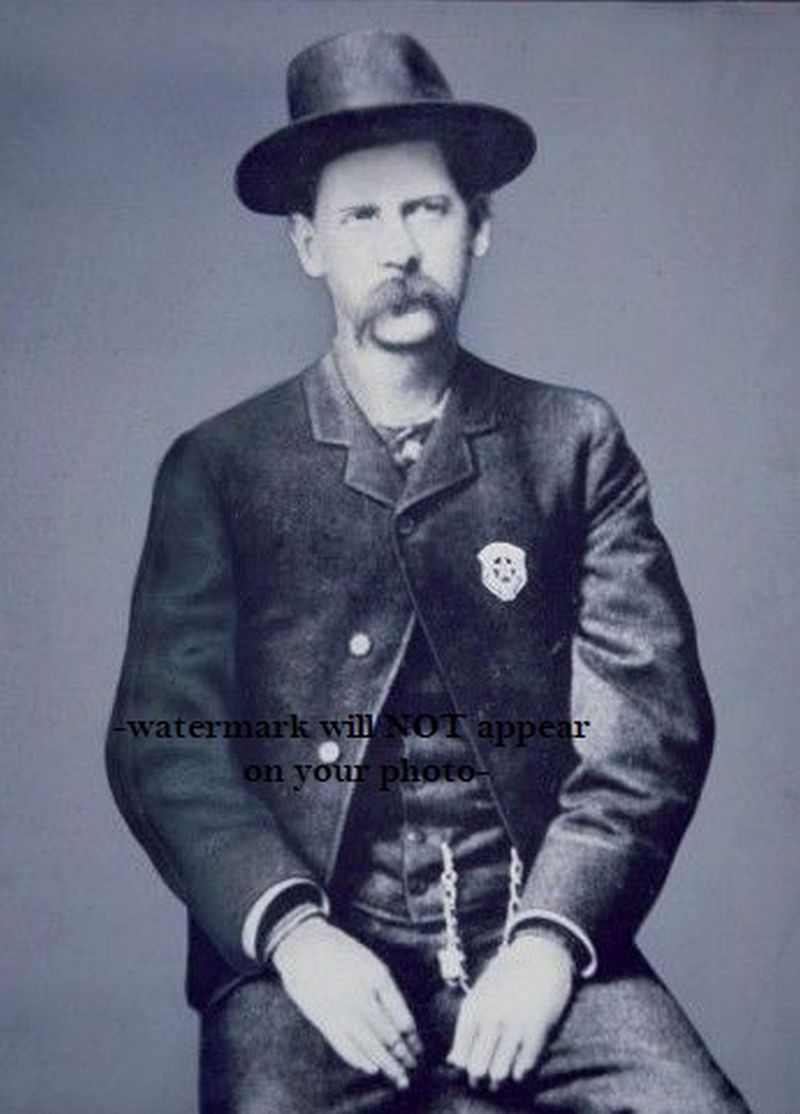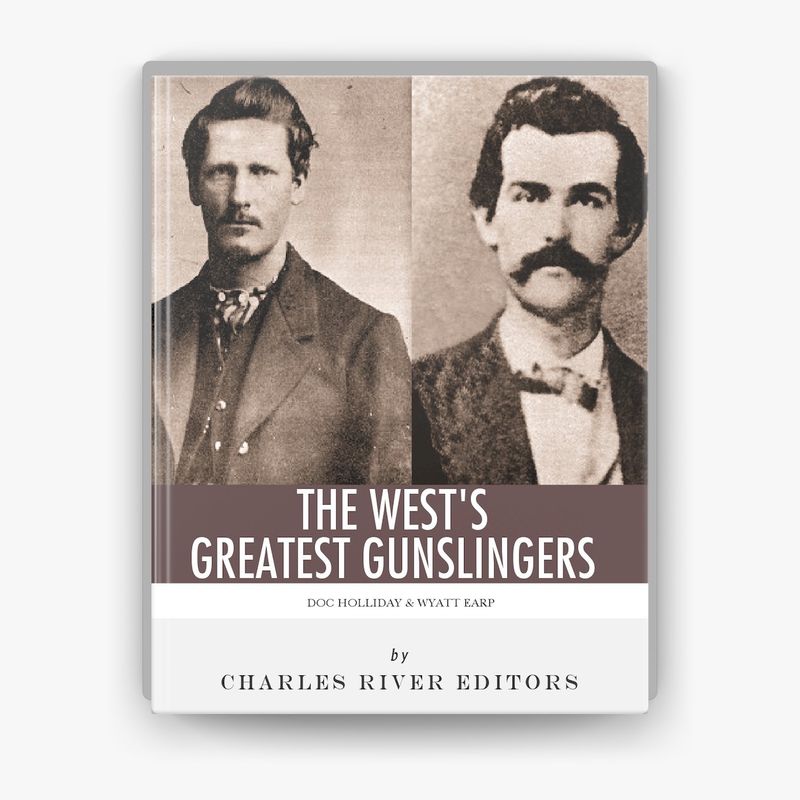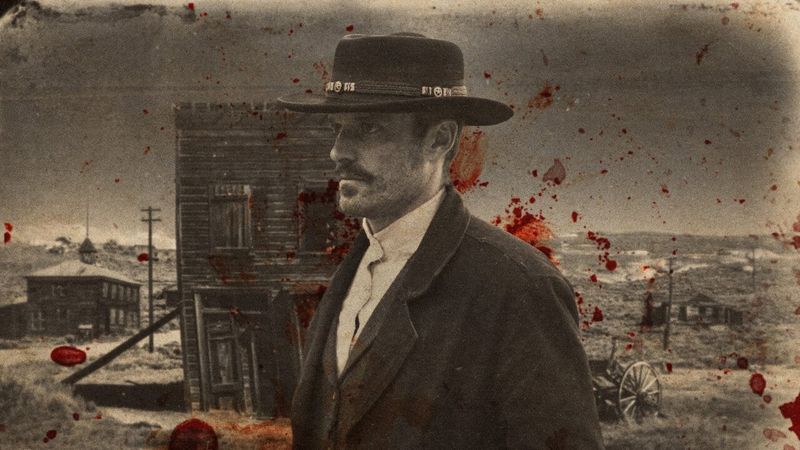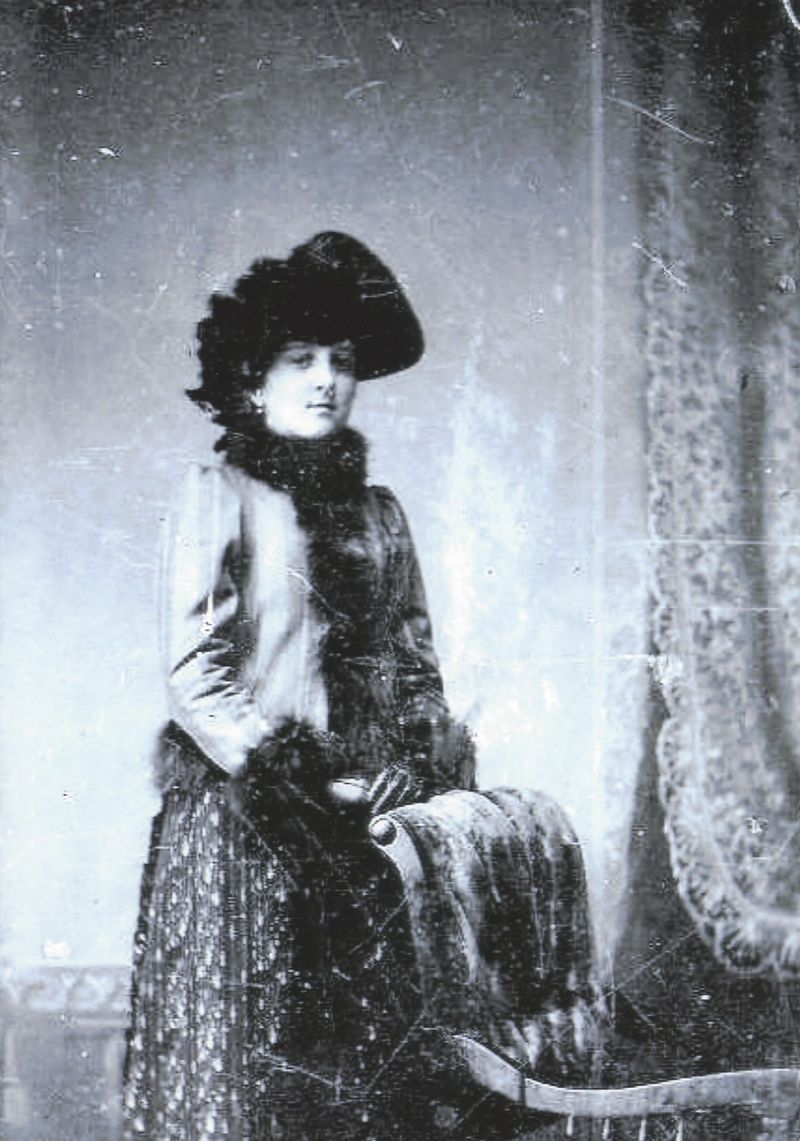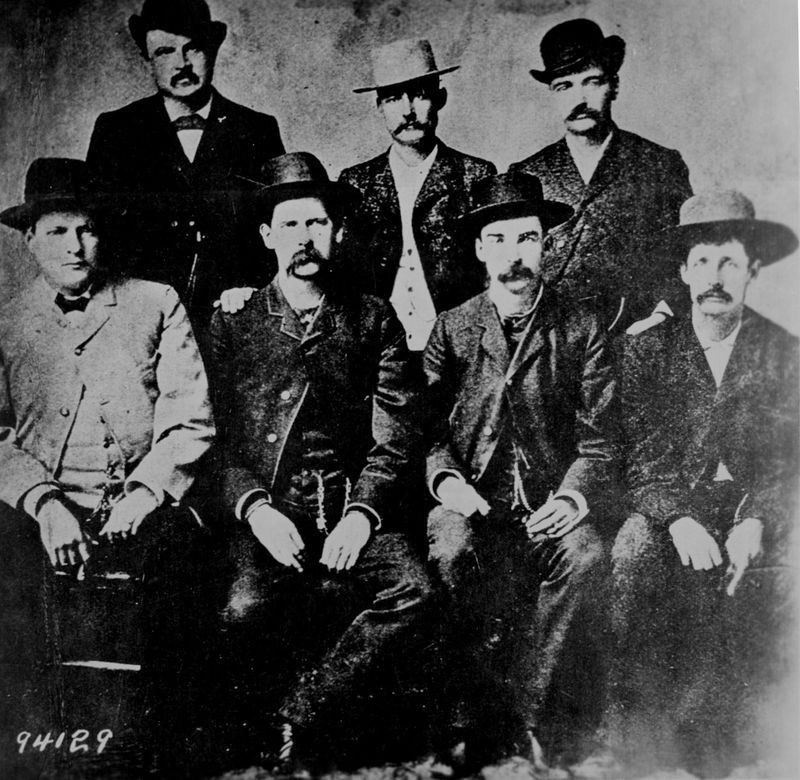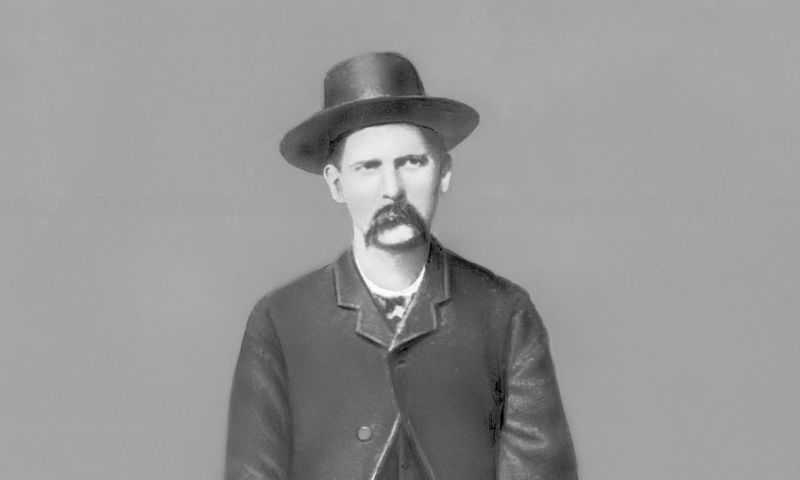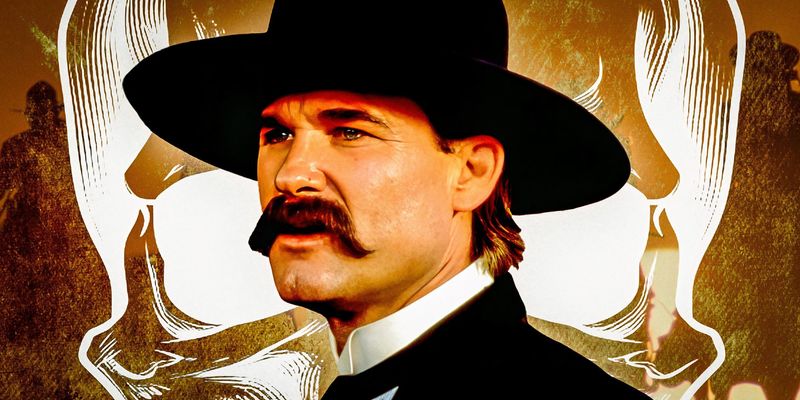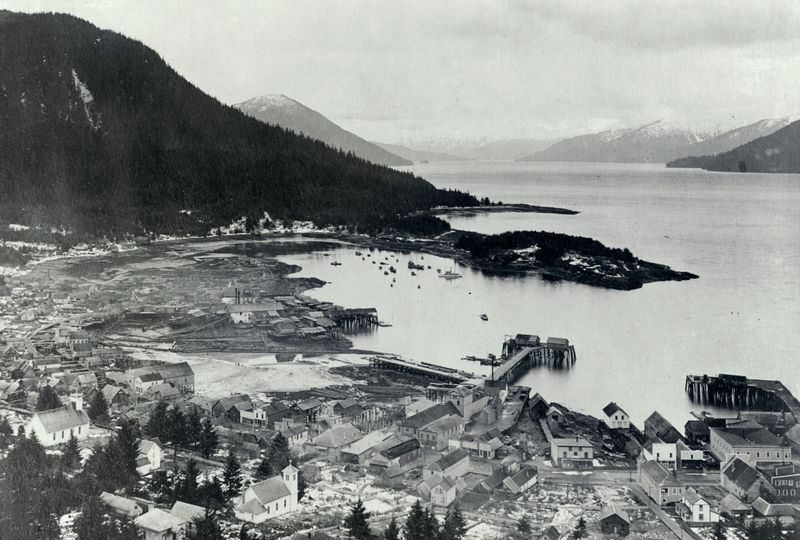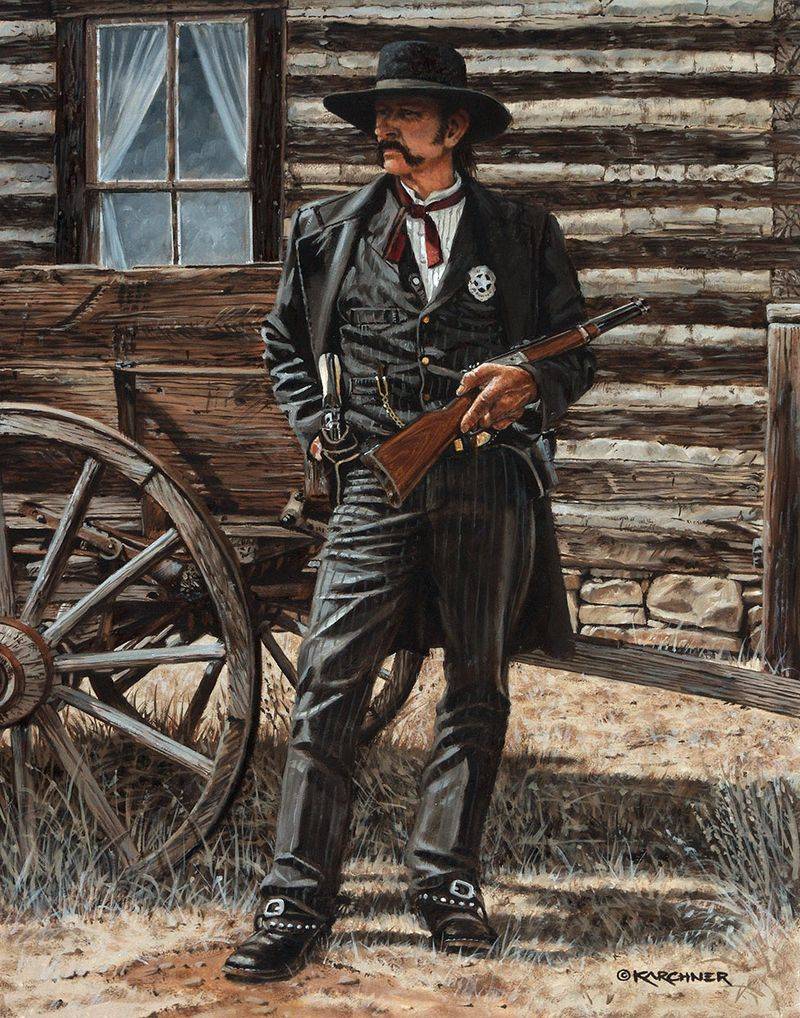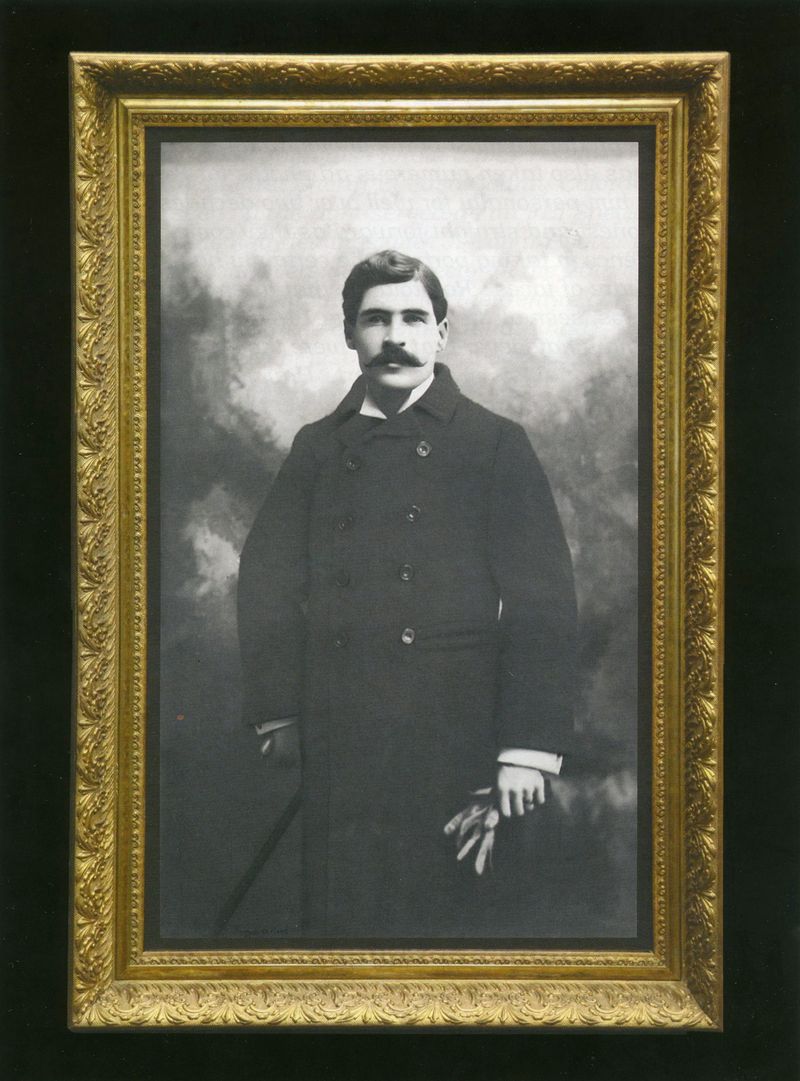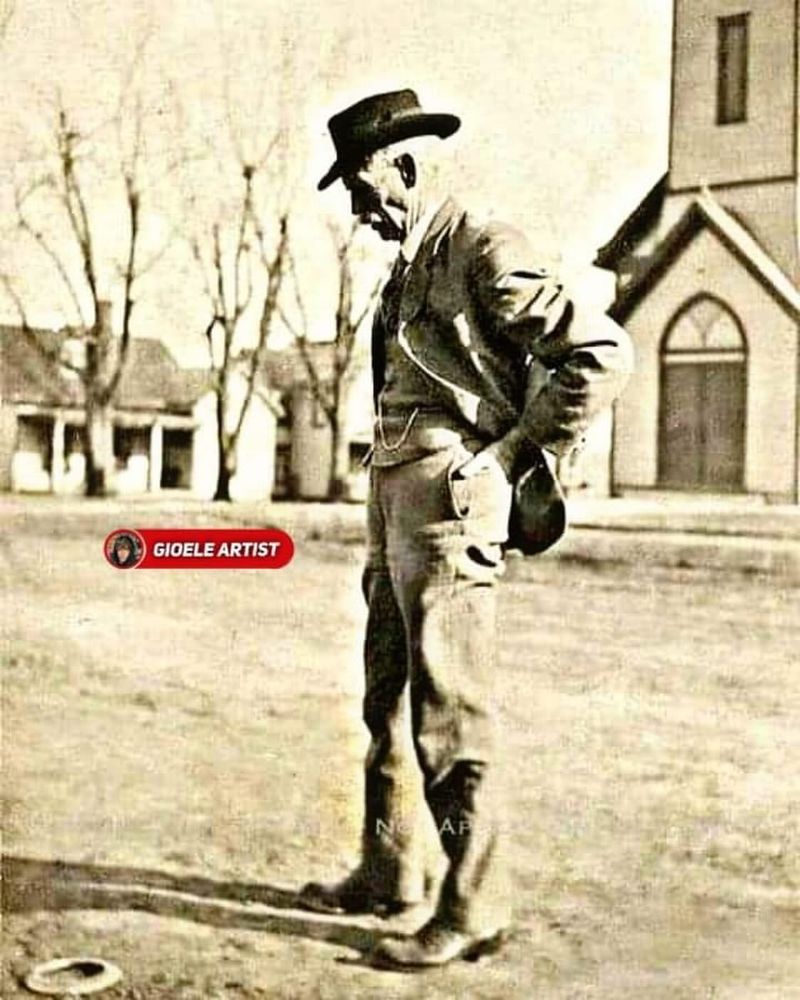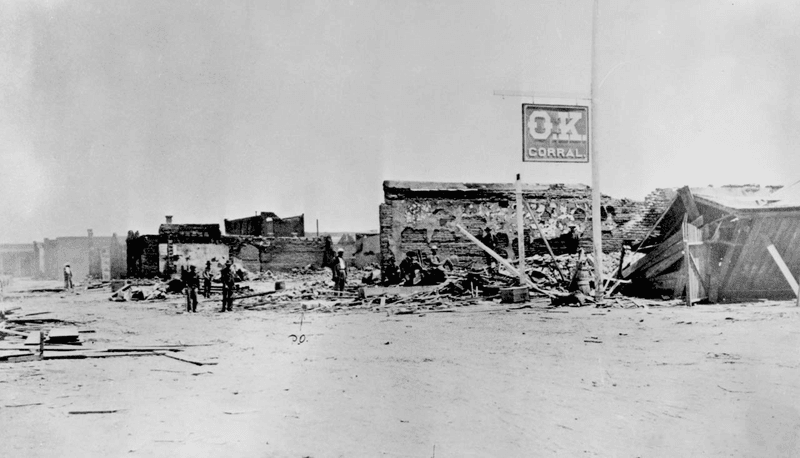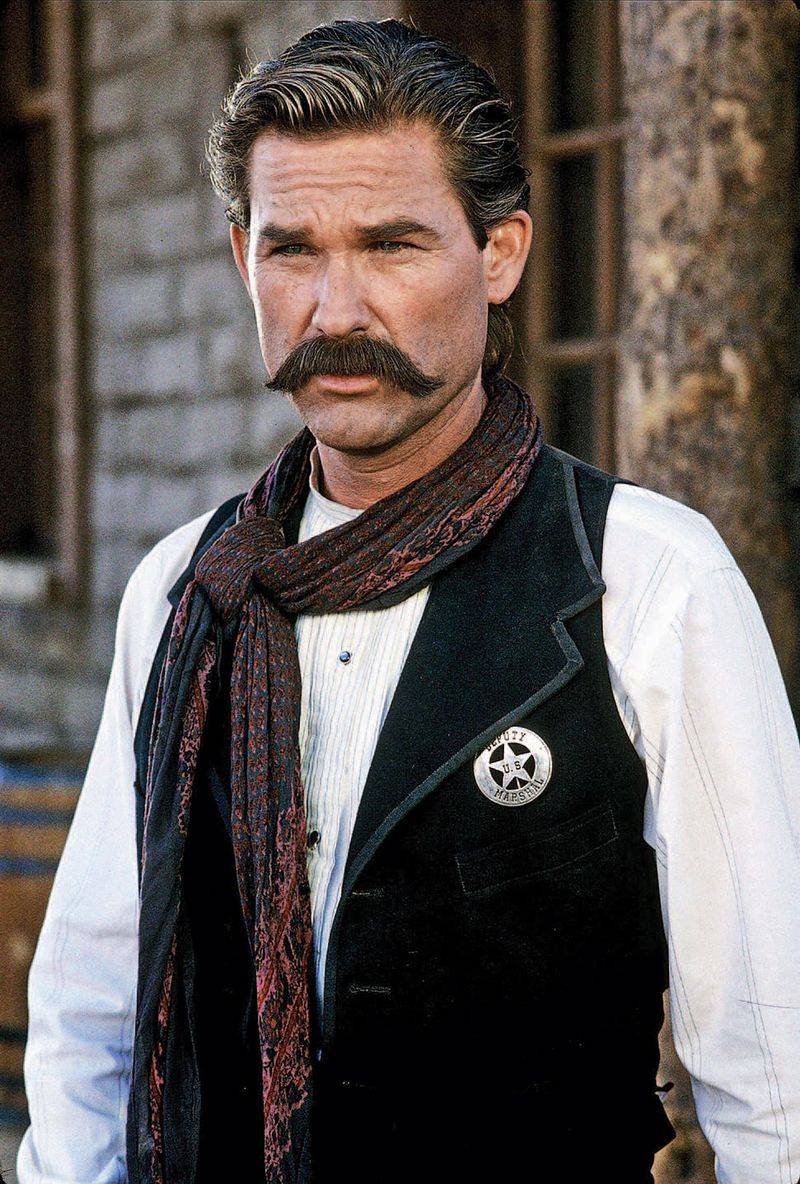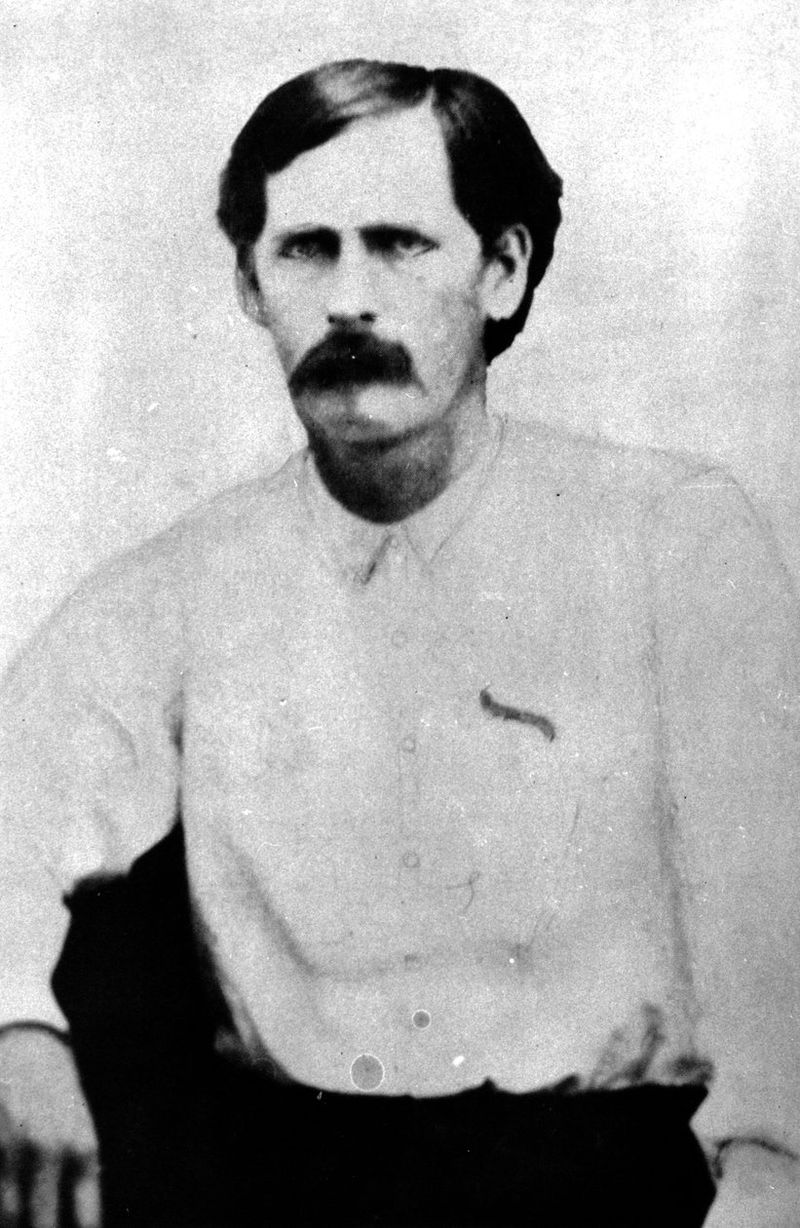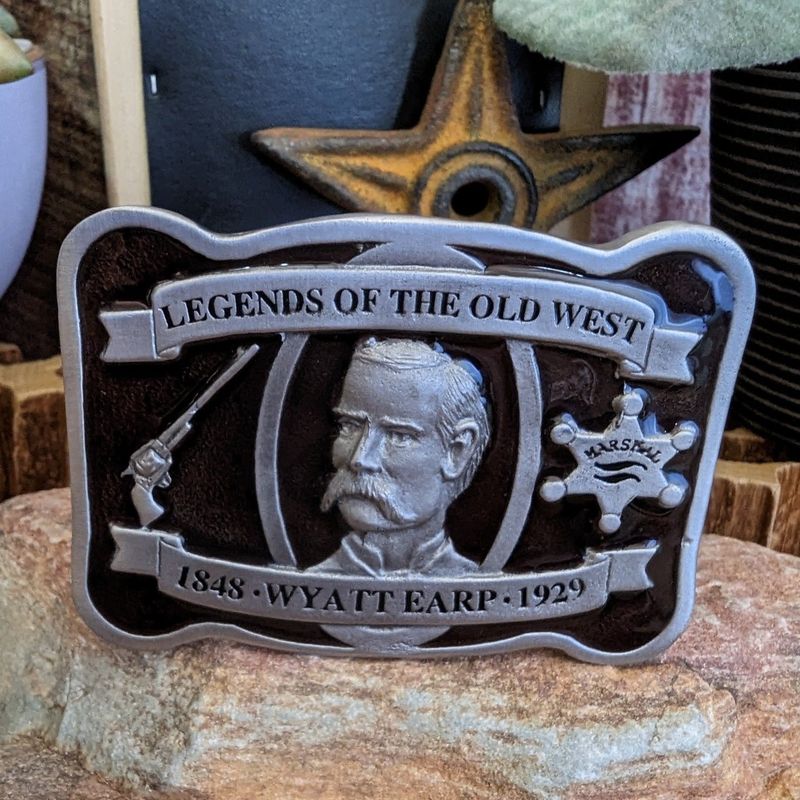Wyatt Earp is a name synonymous with the Wild West. Known for his role in the infamous Gunfight at the O.K. Corral, Earp’s life was filled with adventure, challenges, and little-known facts that only add to his legendary status.
This blog explores 18 shocking facts that paint a vivid picture of this iconic figure. From his early arrests and multiple marriages to his Hollywood connections, each fact uncovers a different facet of Earp’s complex life.
Delve into these captivating stories and discover the man behind the legend.
1. He Wasn’t Always a Lawman
Wyatt Earp’s journey to becoming a legendary lawman was not straightforward. His early years saw him taking on various roles, such as a teamster, saloon keeper, and buffalo hunter.
These diverse jobs shaped his understanding of people and the rough life of the frontier. Working in saloons, he witnessed firsthand the Wild West’s lawlessness and chaos.
These experiences likely influenced his eventual decision to uphold the law. The skills and insights he gained during these formative years played a crucial role in his later success as a lawman.
2. He Was Arrested Early in Life
In 1871, Wyatt Earp’s life took a dramatic turn when he was arrested for horse theft in Arkansas. This brush with the law was a pivotal moment, though not one he would have wanted.
Earp managed to escape from jail before facing trial, showing early signs of his daring nature. This incident paints a complex picture of Earp, who would later become known for enforcing the law.
His early run-ins with the law and subsequent escape likely contributed to shaping his views on justice and his future path as a lawman.
3. He Fought in the Legendary Gunfight at the O.K. Corral
The Gunfight at the O.K. Corral is perhaps the most famous event in Wyatt Earp’s life. Taking place in Tombstone, Arizona, in 1881, this shootout lasted just 30 seconds but cemented Earp’s place in Wild West lore.
Alongside his brothers and friend Doc Holliday, Earp faced off against the Clanton-McLaury gang. This brief yet deadly confrontation was a turning point in Earp’s life, highlighting his bravery and determination.
The O.K. Corral gunfight remains a symbol of the Wild West and Earp’s enduring legacy as a fearless lawman.
4. He Was Never Shot in a Gunfight
Remarkably, despite being involved in numerous gunfights, Wyatt Earp was never wounded by gunfire. This fact adds an almost mythical quality to his reputation.
Earp’s ability to emerge unscathed from these dangerous encounters speaks to his skills and perhaps a bit of luck. His survival in these violent situations contributed to the legend of his invincibility.
As a lawman, Earp often faced threats from outlaws, yet he managed to uphold the law without sustaining injuries. This aspect of his life only adds to the intrigue and fascination surrounding his story.
5. He Was a Friend of Doc Holliday
Wyatt Earp’s friendship with Doc Holliday was a defining aspect of his life. The two met in the frontier towns and formed a bond built on loyalty and mutual respect.
Holliday, a dentist turned gambler, was a controversial figure, but Earp saw beyond the rough exterior. Their friendship was solidified during the Gunfight at the O.K. Corral, where they fought side by side.
This partnership not only influenced Earp’s life but also became a legendary part of Wild West history. Their camaraderie remains one of the most celebrated alliances in Western folklore.
6. He Went on a Vendetta Ride
After the assassination of his brother Morgan, Wyatt Earp embarked on a personal vendetta across Arizona. This mission was driven by a deep sense of justice and revenge.
Earp, along with a posse of loyal friends, pursued those he believed responsible for his brother’s death. This intense and dangerous journey saw Earp taking the law into his own hands, a decision that would define him.
The vendetta ride was a testament to Earp’s determination and toughness, furthering his image as a rugged and relentless figure of the Wild West.
7. He Had Multiple Wives
Wyatt Earp’s personal life was as intriguing as his public persona. He had at least three common-law wives throughout his life, with Josephine Marcus being the most notable.
Earp’s relationship with Marcus lasted until his death, showcasing a more personal and emotional side to the hardened lawman. These marriages reflect Earp’s complex character and the challenges of maintaining relationships in the tumultuous environment of the Wild West.
His partnerships, especially with Marcus, reveal a softer side to Earp, often hidden beneath his rough exterior.
8. He Was a Lawman in Multiple Wild West Towns
Wyatt Earp’s career as a lawman saw him serving in several infamous Wild West towns, including Wichita, Dodge City, and Tombstone. Each town presented its own set of challenges and lawlessness.
Earp’s ability to maintain order and enforce the law in these rough environments speaks to his skills and dedication. His time in these towns helped cement his reputation as a formidable and respected figure.
Earp’s work in these communities was not just about upholding the law but also about navigating the complex social dynamics of the frontier.
9. He Was Involved in Boxing
In an unexpected twist, Wyatt Earp found himself involved in the world of boxing. He refereed the 1896 heavyweight championship between Bob Fitzsimmons and Tom Sharkey.
The match ended in controversy due to Earp’s decision, which favored Sharkey. This incident highlights Earp’s diverse interests and his sometimes contentious nature. His involvement in boxing adds another layer to his multifaceted life, showing that Earp’s influence extended beyond law enforcement.
The controversy surrounding this match only added to his notoriety and the complexity of his life story.
10. He Worked in Hollywood
In his later years, Wyatt Earp found a place in the burgeoning Hollywood film industry. He advised on silent film Westerns and formed friendships with cowboy actors like Tom Mix.
This connection to Hollywood reveals Earp’s adaptability and ability to remain relevant even as the Wild West faded into history. His insights and firsthand experiences provided authenticity to early Western films.
Earp’s involvement in Hollywood not only extended his influence but also helped shape the portrayal of the Wild West in popular culture, ensuring his legacy endured.
11. He Hunted Gold in Alaska
Wyatt Earp’s adventurous spirit led him to Alaska during the gold rush of the late 1890s. There, he ran saloons in Nome, capitalizing on the influx of prospectors and fortune-seekers.
This venture into the gold rush era showcases Earp’s entrepreneurial side and his willingness to seize new opportunities. The harsh conditions and booming economy of Nome provided a unique backdrop for Earp’s business endeavors.
His time in Alaska further illustrates the breadth of his experiences and his ability to adapt to the ever-changing landscapes of the American frontier.
12. His Reputation Was Mixed
Wyatt Earp’s legacy is a blend of admiration and controversy. Celebrated as a hero and lawman, he was also criticized for being a gambler and opportunist. Some viewed his methods as outside the law, adding complexity to his character.
This dual reputation highlights the diverse perspectives on Earp’s life and actions. While many saw him as a symbol of justice, others viewed him with skepticism.
This mixed reputation adds depth to his story, illustrating the multifaceted nature of his life and the challenges of separating fact from fiction in his legacy.
13. His Story Was Heavily Mythologized
Much of what is known about Wyatt Earp stems from mythologized accounts, particularly Stuart Lake’s “Wyatt Earp: Frontier Marshal.” This biography romanticized Earp’s life, contributing to the larger-than-life image we have today.
The tales of his adventures often blur the line between fact and fiction, making it challenging to discern the true story. These embellished accounts have shaped public perception, immortalizing Earp as a quintessential Western hero.
The mythologization of his life has ensured his place in history, though it complicates efforts to understand the real man behind the legend.
14. He Died in Los Angeles
Wyatt Earp lived to the age of 80, passing away in 1929 in Los Angeles. His death marked the end of an era, as he outlived many contemporaries of the Wild West. Earp’s final years were spent away from the frontier, yet his legacy continued to resonate.
Living in Los Angeles, he witnessed the world transforming into a modern age, far removed from the dusty streets and saloons of his youth.
Earp’s passing in a burgeoning city like Los Angeles underscores the transition from the untamed West to a more urbanized society.
15. He Was the Last Survivor of the O.K. Corral
Remarkably, Wyatt Earp was the last living participant of the legendary gunfight at the O.K. Corral. Outliving all others involved, Earp’s status as the sole survivor added to his mythos. This fact allowed him to shape the narrative of the gunfight and his role within it.
His longevity ensured that his version of events became widely accepted, further entrenching his place in history.
Earp’s survival, both during the gunfight and long after, contributed to his enduring legend, allowing him to reflect on his life and influence the stories told about the Wild West.
16. He Inspired Countless Films and Shows
Wyatt Earp’s life and legacy have inspired over 50 films and countless television shows. Renowned actors such as Kurt Russell, Kevin Costner, and Henry Fonda have brought Earp to life on the screen.
These portrayals have helped cement Earp’s status as an iconic figure of the Wild West. Each interpretation adds a new dimension to his character, keeping his story alive for new generations.
The continued fascination with Earp’s life underscores his impact on American culture and the enduring appeal of his adventurous and complex story.
17. He Had a Tombstone but No Tombstone
Though forever linked to Tombstone, Arizona, Wyatt Earp was actually buried in Colma, California. This final resting place is a curious contrast to the town synonymous with his name.
Earp’s grave in Colma reflects the journey of his life, moving from one frontier to another, yet leaving a lasting impact wherever he went.
The irony of his burial location adds an intriguing twist to his story, emphasizing the separation between myth and reality. Earp’s connection to Tombstone remains strong, despite the physical distance from his actual tombstone.
18. He Became a Symbol of the American West
Wyatt Earp’s legacy endures as a symbol of the rugged, law-defending frontier hero. Despite controversies and mixed reputations, his image as a fearless lawman remains ingrained in American culture.
Earp’s life story encompasses the essence of the Wild West, from gunfights and vendettas to entrepreneurial ventures and mythologized tales. This multifaceted legacy continues to captivate and inspire, making Earp an enduring figure in the narrative of the American frontier.
His story serves as a testament to the complexities and contradictions of the human experience during a transformative period in history.
